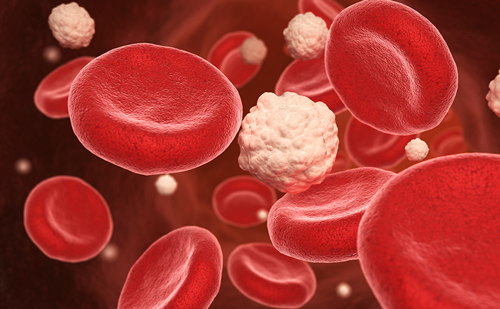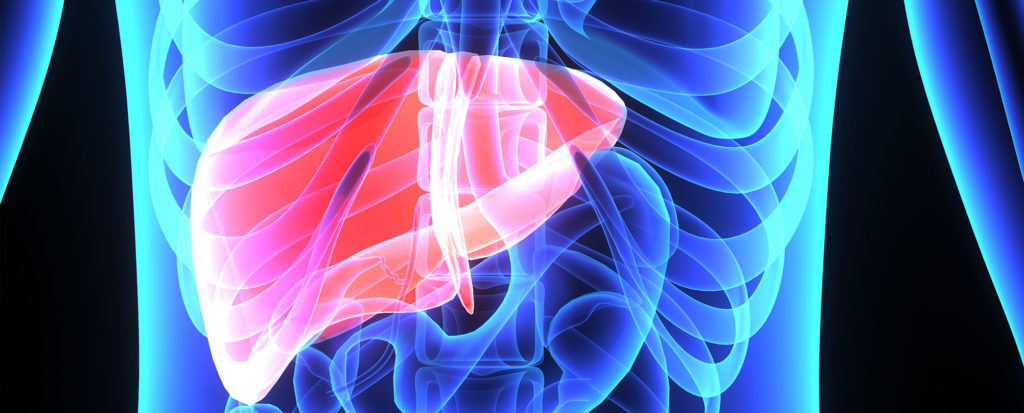The prevalence of obesity has increased exponentially across the world, nearly doubling in the span of a decade.1 This is primarily attributed to lifestyle shifts, including diets dominated by hydrogenated fat and animal products, carbohydrate excess and increasingly sedentary lifestyles. The impact of these trends is magnified in developing countries as the resources available to manage the disability and premature deaths related to obesity are limited. In India, wherein 5% of the population is predicted to be morbidly obese, costs of managing under-nutrition, traditionally considered the dominant social inequality in India, and over-nutrition, will become equal by the year 2025.2 Furthermore, women are shown to have nearly double the obesity prevalence in Asian countries compared to men. Specifically, in the South Asian population, there has been a >20% increase in the prevalence of obesity in women compared to <15% in men.3 Obesity in the south of the Asian continent shares a common characteristic phenotype across all countries in South Asia, including South India.
Health-related quality of life (HRQOL) is a tool that uniquely assesses several dimensions such as the physical, psychological and sexual health, and dietary experience of patients.4–6 Furthermore, HRQOL is an independent risk factor for mortality, particularly among patients with existing metabolic disease.7 Considering the short appointment times and elevated patient load among physicians in hospital settings within South Asia, efficient measures of HRQOL, particularly among obese patients, are lacking.
The aim of this study was to analyse HRQOL in morbidly obese women, defined as women with a body mass index (BMI) of >32.5 kg/m2,8 attending a bariatric clinic in southern India; assess the HRQOL among patients with different grades of obesity; and to ascertain which anthropometric measures of obesity correlate best with HRQOL in these patients. To our knowledge, this study stands as the first study to assess HRQOL in South Asian women and seeks to uniquely determine clinical measures that are applicable for resource-limited and time-constrained settings. We hope that this may be utilised to determine future directions for understanding the aetiology and management of poor HRQOL in South Asian patients.
Methods
Study design and participants
We performed a prospective evaluation, conducted in a multidisciplinary bariatric clinic within the Christian Medical College (CMC) of Vellore, dedicated to the treatment of patients with obesity. The bariatric clinic is comprised of medical endocrinologists, bariatric surgeons, psychiatrists and a dietician, located within a South Indian tertiary care hospital. As the clinic is referral based, all participants were referred by their primary-care or specialty-based appointments within the CMC. All consenting participants of this study were women and were required to have a BMI >32.5 kg/m2, as per guidelines in South Asian adults.8 Patients with a BMI below this and who were below the age of 18, were excluded. Data were collected over a total of 6 months. This study was approved by the Institutional Review board vide IRB Min No 10146 dated 22 June 2016. Informed consent was obtained from all individual participants included in the study. The Strengthening the Reporting of Observational Studies in Epidemiology (STROBE) reporting guidelines were used while drafting the manuscript.9
Measurements
In our analysis, we evaluated the relationship between HRQOL and anthropometric measures. Anthropometric variables measured included height (cm), weight (kg), BMI (kg/m2), waist circumference (cm) and hip circumference (cm). These measures were taken using a standardised tape measure and were measured by the same clinic staff member for all patients.
HRQOL was calculated via a detailed, previously-validated questionnaire administered to all patients attending the clinic.4,10 HRQOL was measured using the Quality of Life, Obesity and Dietetics (QOLOD) score, which is a standardised and well-accepted questionnaire, covering the impact of weight on physical activity, psychosocial impact, impact on sex life, comfort with food, and diet experience. The questionnaire consisted of 36 questions divided into four sections, including the impact of obesity on physical distress, self-esteem, sexual health and work-related life. The participants were required to rate each question on a scale of 1–5 with 1 representing ‘always affected’ and 5 representing ‘never affected’. Thus, a lower final calculated score represented worse HRQOL compared to a higher score. Each individual was evaluated for all four domains of the HRQOL questionnaire.
Mixed methods were employed regarding how the questionnaire was administered. For patients who spoke English as a first language, self-reporting methods were used, and for those who were illiterate or whose primary language was not English, the survey was presented by staff.
For further statistical analysis, each individual score was represented as a percentage, meaning that a score of 36/180 would be 0% (i.e., HRQOL could not get any worse). To do this conversion, we subtracted 36 from each participant’s score and from 180 (the denominator), turning the score into a fraction, which was then converted into a percentage. Individuals who had an HRQOL score (expressed as percentage) <50% were considered as having below average HRQOL. We performed an exploratory analysis of BMI as four quartiles and compared the total HRQOL scores between these groups. One-way ANOVA (analysis of variance) was used to compare the mean HRQOL values across the four quartiles of BMI.
Statistical analysis
Demographic data was analysed with descriptive statistics, such as mean with standard deviation (SD) for the continuous variables, and for the categorical variables, frequency and percentage is provided. A correlation between different obesity indicators was performed using Pearson and Spearman correlations based on distribution of variables. Coefficient of determination (R2) was calculated to determine how variance in obesity indicators is explained in the model. Statistical Package for the Social Sciences (SPSS) version 16.0 software (IBM Corp, Armonk, NY, USA) was used for statistical analysis. The threshold of statistical significance was set at α=0.05.
Results
The patient cohort included 88 female patients attending the bariatric clinic. The mean age of the study participants was 37.3 years. Forty-six percent of participants did not pursue education beyond high school. A total of 78% of the participants were married and 21% of the married women did not have children (Table 1); none of the unmarried women in the study had children. The average BMI of the study participants was 39.6 kg/m2.

The average HRQOL score among participants was 40.2%. The individual components have been described in Table 2. A total of 53/88 (60.2%) individuals had an HRQOL <50%. Analysis of potential associations between anthropometric measures and HRQOL focused on five variables: waist circumference, hip circumference, waist–hip ratio, waist–height ratio and BMI. Results demonstrated the strongest correlation between BMI and quality of life (R2 value of 0.163), with hip circumference arising as the next strongest correlated variable
(R2 value of 0.143; Table 3).


Our exploratory analysis used quartiles to provide a more nuanced and multifaceted understanding of the studied variables (Table 4a and 4b). Patients in quartiles with higher BMIs had increasing waist circumference and hip circumference. In looking at HRQOL categories, patients with higher BMI quartiles had lower scores for physical impact and psychosocial impact, and higher scores for sexual health, comfort with food, and experience with dieting compared with patients in lower quartiles. The individual comparisons of different HRQOL components across increasing quartiles is presented in Table 4b.


Discussion
In our patient cohort, the majority of participants (53/88; 60.2%) scored below average for HRQOL (<50%). This held true in both the overall and the subcategory scores, including physical and psychosocial impact, comfort with food, and sexual health. The strongest negative correlation with HRQOL was with BMI in comparison to other anthropometric measures. Despite evidence that overall HRQOL is increasingly poor with increasing BMI, the subcategories responsible for this drop in score in each quartile differ.
HRQOL is a known predictor of future mortality or treatment compliance in a number of populations, though primarily focused on geriatric and terminally ill populations.7,11 Clinically, higher BMI has been significantly correlated with increased health risks including cardiovascular disease, hypertension and diabetes mellitus.12 This evidence is particularly striking when considering the population studied. There is growing evidence that South Asian men and women have a higher body fat percentage at lower BMIs compared to their European counterparts, irrespective of age and smoking status.13–15 Individuals with a higher body fat percentage and lower BMI have a significantly increased mortality risk and are more likely to have cardiovascular disease and/or type 2 diabetes.16–19 These data were the driving factors for updating the World Health Organization’s categories of overweight and obese based on BMI (i.e., rather than a BMI cutoff of 30 kg/m2 for obese, using a BMI of 25 kg/m2 in Asian patients).20,21 To our knowledge, our study is the first to focus on the intricate topic of HRQOL in a population of obese South Indian women and to look at the subcategories of HRQOL amongst this cohort. These results highlight the need to consider therapeutic interventions that are individualised to a patient’s needs based on BMI and their distinct HRQOL profiles in order to be most efficacious.
Though conventionally obesity is considered a disease that affects educated and affluent populations, we found that a large proportion of our subjects had not pursued higher education.22 Furthermore, individuals with obesity are often stigmatised among their peers, which may lead to delays in marriage. In our study population, about one-fifth of women were not married, despite a mean age of 37 years, which traditionally is a very late age for marriage in the Indian context.23
Bariatric clinical practice appears to be moving away from BMI as a measure of obesity with respect to its medical complications, particularly insulin resistance, opting preferably for measures of central adiposity.24,25 Moreover, BMI is unable to differentiate the contribution of lean mass against fat mass to the body weight.24,25 Previous literature is inconsistent with regards to the correlation between BMI and HRQOL in obese individuals, demonstrating both strongly negative and neutral associations when compared to other measures of adiposity.6,26,27 Our study makes it evident that BMI, particularly with respect to HRQOL, is not to be ignored. Furthermore, when considering the ease with which BMI can be measured and standardised in a clinical setting compared to central adiposity measures (particularly waist–hip circumference), it appears that BMI is an efficient correlate for HRQOL in morbidly obese South Indian women.
The limitations of this study primarily arose from the small number of patients and lack of a healthy control group to compare the HRQOL. Moreover, since this was a hospital-based study, the results cannot be projected to the general population. Future directions for this research will focus on different therapeutic interventions, including lifestyle changes, medical management or bariatric surgery, and their impact on HRQOL.
Our study demonstrates that in middle-aged South Indian women who are morbidly obese, HRQOL is below average in all areas and is highly correlated with BMI, with different BMI levels having more impact in different subcategories, thus supporting the need for an individualised therapeutic focus for each patient. Furthermore, we recommend using HRQOL as an opportunity to recognise medical and psychiatric comorbidities that may otherwise go unnoticed in a hectic tertiary
care setting.














